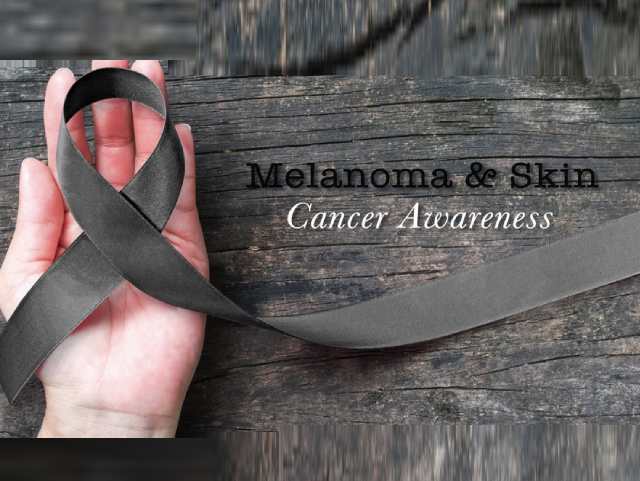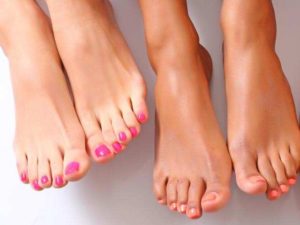Skin cancer is among the 5 most common cancers in the Western World and it is not uncommon in the East either. Unfortunately, due to poor awareness, skin cancer is often detected at a late stage in the darker races..
Cancer can affect any tissue in the body. When a tissue gets affected by cancer, it’s cells become abnormal and multiple rapidly, and unnaturally. As the disease worsens, these cancer cells can migrate from the original tissue to affect other tissue in the body.
Skin cancer is broadly divided into Melanoma and Non-Melanoma cancer. This classification depends on the part of the skin where the cancer originated from. The human skin has two broad layers – the superficial layer called Epidermis, and the deep layer called Dermis. The epidermis is made up of skin cells called Keratinocytes. The two layers of skin are separated by the ‘Basal Layer’, which is made up of basal cells, with the occasional Melanocyte, which contains the pigment Melanin.
Non-Melanoma skin cancers arise from the Keratinocytes (Squamous cell cancer) and Basal cells (Basal Cell Cancer). Melanoma arises from the Melanocytes in skin.
There are also various pre-cancerous skin conditions. These often look vague, innocent and do not cause much itching or discomfort. Therefore they are usually ignored by the patient. Worse, they often mimic common skin conditions like eczema or psoriasis, so they may go undetected by family physicians for months or years.
According to statistics provided by the American Academy of Dermatologists, it is estimated that 160,000 cases of Melanoma will be diagnosed in the United States in 2017. Melanoma rates have doubled in the US in the last two decades, and over 1 million Americans are living with Melanoma. The darker races are often diagnosed in late stages of skin cancer, and have a have a worse prognosis and lower overall survival rate.
Could there be something about you, which leaves you vulnerable to develop skin cancer? You are more likely to develop skin cancer if –
1) You have light skin with red or blonde hair
2) You have light skin with green or blue eyes
3) You have a close family member who has suffered from skin cancer
4) You have more than 20 moles on your body or you have more than 5 large moles (of size 5 mm or greater)
5) You have multiple freckles across your face and body; and a tendency to burn rather than tan
6) Multiple episodes of blistering sunburn, especially in childhood
7) You are a Caucasian living for many years in tropical countries, Australia or New Zealand
8) You have spent many years in outdoor activities, tanning, or spending time in tanning beds, especially without sun protection
9) Patients who have been under treatment using Ultraviolet or other Radiation for other medical conditions
10) Certain hereditary disorders like Albinism makes a person extremely sensitive to sunlight, and therefore more vulnerable to skin cancers
11) If you have worked in industries which involve contact with coal tar, petrochemicals or arsenic.
How can one tell if a mole is harmless or turning cancerous? Dermatologists urge you to learn the ABCDE of skin cancer –
A is for Asymmetry – A mole is generally round or oval but symmetrical in its shape. When a mole turns cancerous, it loses its symmetry and becomes uneven in shape.
B is for Border – A mole has smooth, well-defined and rounded borders. A melanoma’s border is ragged, notched, blurred or irregular
C is for Colour – A mole is uniform in colour – be it brown or black. A melanoma’s colour is clumpy with areas of lighter and darker pigmentation
D is for Diameter – Melanomas are usually over 6 mm in diameter. A pencil eraser is often used as a standard to describe 6 mm.
E is for Evolution – If a mole is growing larger or darker in size, has turned itchy, if it bleeds or ulcerates, this may be an indication of evolution to Melanoma.
Basal Cell Carcinomas (BCC), are usually dark crusted nodules with rolled up pearly borders. They are most likely to be found on the nose, forehead or scalp of elderly men. This type of skin cancer causes local ulceration and invasion, leading to the collapse of the nose or damage to the ear, if they are affected. However is unlikely to spread to the lymph nodes. Smaller BCCs can be frozen with liquid Nitrogen, leading them to blister and peel off. Larger BCCs may need surgical excision. Hugh Jackman created more awareness on this type of skin cancer, when he revealed he has suffered from BCC several times, and has required multiple surgeries on his nose to have them excised. Contrary to popular belief, not all skin cancers are black in colour. BCCs may be pink or pearly in colour as well.
Squamous Cell Carcinoma (SCC) is usually described as a cauliflower shaped growth of skin tissue. SCCs generally develop in sun exposed areas, or areas which have been exposed to repeated trauma, infection or chronic skin disease. This type of cancer does spread deeper into the tissues and travels to the lymph nodes, but if detected early, it can be treated successfully by surgery/amputation followed by chemotherapy and/or radiation. Diane Keaton has suffered from SCC and is now an active advocate for sunscreen use.
Melanomas are the deadliest of all skin cancers. It does not always occur on sun exposed parts of the body. It has been known to occur on the back, thigh, genitals, nails and even the soles of the feet. They look subtle and innocuous and have often spread its tentacles across other organs by the time they are detected. Even dark skinned Bob Marley died of Melanoma.
How can I protect myself from skin cancer?
1) Sun protection – Follow the Slip-Slop-Slap-Seek-Slide formula. Slip on a shirt, slop on some sunscreen, slap on a hat, seek the shade and slide on a pair of sunglasses. Protect your skin and eyes from harmful ultraviolet radiation using clothing, sunscreen, sunglasses and staying in the shade.
2) Use a broad-spectrum, water-resistant, pharmacy-grade sunscreen over all sun exposed areas 20 minutes before stepping out in the sun. Reapply every 4 hours, if you plan on remaining outdoors. SPF 30 and above is good enough for day-to-day use. Choose SPF 50 or above for sporting activities.
3) If you’re a Caucasian living in a tropical country, or a country like Australia which has a hole in it’s Ozone layer, then you might consider getting some UV Protected clothing. Unlike a sunscreen, UV Protective clothing provides day long protection.
UPF (Ultraviolet Protection Factor) is the designated rating given to sun protective textile and clothing. A garment must have a minimum UPF of 15, in order to be rated as “sun protective”. A UPF rating of 15 indicates the fabric of a garment will allow only 1/15th (roughly 6%) of available UV radiation to pass through it.
If your clothing does not come with a UPF label, how can one determine if a said piece of clothing is sun protective? The popular notion is that white and thin cotton garments provide the best sun protection. This is wrong. As a thumb rule, pigment-dyed fabrics (in dark colours like black or indigo) which are thick, tightly woven and non-stretchable, provide the best sun protection. If a fabric is specially treated in optical brightening agents (present in most ‘long lasting white’ detergents), its UPF is enhanced. Dark coloured denims, wool garments, 100% polyester and unbleached cotton have high UPF rating. Natural fibres like bleached cotton and rayon, or polyester crepe and viscose score low on the UPF scale. If a fabric is stretched or worn out to 10% or more beyond its natural dimensions, its UPF rating falls tremendously. A high UPF garment also loses its sun protectiveness, if it gets wet.
4) Check the daily UV Index of your city – UV Index provides a forecast of the expected risk of over-exposure to radiation from the sun, for the following day. It stands on a scale of 0 to 11+. It is accompanied by recommendations for sun protection.
For instance, UV Index of 0-5 indicates low risk of radiation. A pair of sunglasses, along with a hat or SPF 15 sunscreen is sufficient if you only plan to spend 40-100 minutes in the sun.
UV Index of 6-8 indicates high risk of exposure to radiation. The recommendation is to use sunscreen of SPF 30 or above, along with a hat and shades, and not more than 20-30 minutes of sun exposure for the day. UV Index 11+ indicates extreme risk of exposure to radiation, and is declared as a “Sun Alert” day. People are urged to stay indoors and not spend over 15 minutes out in the sun, even if you’re wearing sunscreen.
5) Visit a dermatologist once in 2 years for full body mole screening and skin cancer check. If you have a close family member who has been diagnosed with skin cancer, then get a screening done once a year. If you have suffered from skin cancer yourself, then you might need to visit the dermatologist every quarter, to get your skin examined.




